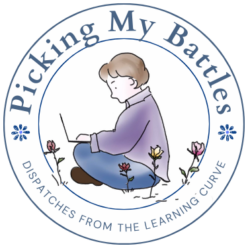Raise your hand if you can identify:
It’s Wednesday morning. You’re looking for something to wear, your Zoom sweatpants and work-appropriate shirts are just snug enough to make a day in front of a camera uncomfortable in more ways than one.
No problem, you think. I’ll just swear off meat/carbs/diet soda/sugar/rat poison and turn my life around. I’ll work out for an hour a day and run a marathon like everyone else.
Everyone knows you always start a diet on Monday, however, you should enjoy those last hurrahs of meat/carbs/diet soda/sugar/rat poison until then. You think about how fit you’ll be by the end of the year as you indulge in a last bit of gluttony on Sunday.
Monday rolls around, and your first morning of abstinence starts beautifully. You even get some exercise in – a slow start, of course. You can’t go from couch surfing to marathons overnight.
And then dinner time rolls around. You’re not really hungry, but suddenly you remember just how much you loved meat/carbs/diet soda/sugar/rat poison. Maybe you should try a different diet/lifestyle change. Maybe have just one bite of that favorite food.
Wednesday rolls around again, and you’re thinking maybe you need to buy a few new shirts.
That’s been my winter, and I’ve tons of excuses for my bad behavior.
- I’ve been dealing with a bleeding disorder that causes anemia making it hard to build iron, and I need to eat more (I actually have been, but the eating more part was just an excuse).
- I’ve been tired.
- I’ve been depressed.
- I’ve been working too much to workout (but not too much to study or watch TV).
- I’ve been tired… Oh wait.
Now it’s spring. I’m looking at the scale and the mirror, thinking a loop of the two images could make a great horror movie I’ll call ‘Terror in the Bathroom.’ It might finally get my blood pressure up, but won’t be progress.
Last Wednesday, I had started my ‘time-to-change’ mantra just before a lunchtime Zoom book club at school. We’re reading Lost at School by Ross W. Greene, a psychologist and child development researcher whose nonprofit, Lives in the Balance, promotes the idea that most maladaptive behaviors result from unlearned skills rather than a lack of motivation or consequences. I’d read his work during a prior behavior analysis and intervention class and found it immediately applicable in working with students with challenging behaviors.
The book club should have been my a-ha moment, but it took a day.
Instead, as soon as class ended, I resumed my own maladaptive behavior – planning for a healthier lifestyle to start four days hence, preceded by overindulgence to mentally ‘prepare’ for deprivation and discipline.
To be sure, sometimes I’ve disrupted the cycle long enough to lose 40 or even 50 pounds, but no ‘lifestyle change’ is never permanent. I’ll blame circumstance or my mental health for the addictive/obsessive behavior. Never once have I questioned if a lack of skills has kept me on the hamster wheel.
Thursday I was debating the merits of low-carb vs. whole foods plant based diets. Each plan has brought some success but eliminating entire food groups – even with the promise of gorging on ‘allowed’ foods – always leads to ‘cheat days’ that turn into cheat weeks and months. I’ll beat myself up, knowing I ‘have the skills’ to lose weight but not the motivation (even though I really do want to be able to run up our mountain when the zombie apocalypse happens).
Recalling our book club discussion from the day before, I wondered, if I had the skills (and, possibly, the motivation) what function does the hamster wheel serve? What skills do I lack?
I looked at my diet behavior which is usually at one extreme or the other. For a while, each extreme feels good physically and emotionally, especially when I’m hitting a depressive phase. Next, just like I would with a student with a challenging behavior, I looked for a healthier replacement.
Trying to remember the opposite of extreme, I stumbled over a strategy that had worked in the past – moderation.
I’d tried moderating ten years ago with slow but steady progress. It wasn’t a deliberate strategy, however, and the siren call of extreme dieting and workouts ultimately pulled me back to battling the extremes.
Thursday, instead of eliminating entire food groups or adopting an unrealistic workout routine, I came up with a set of deliberate behaviors that will, hopefully, eschew the extremes. I identified a reasonable daily calorie limit. Everything is on the menu – in moderation. There are no diet days and no cheat days. There will be physical activity every day – in moderation.
Then, just as I would with a student with ADHD or bipolar, I identified skills to learn or relearn and practice moderating. That means accountability with a food journal. It means serving emotional needs with activities other than over-eating or extreme dieting/exercise.
I don’t know if this plan will work, but I do know the definition of insanity is repeating the same behavior and expecting a different result. And, needing to keep what precious little sanity I have, I’m willing to try anything. Even moderation.
I’ll keep you posted.


